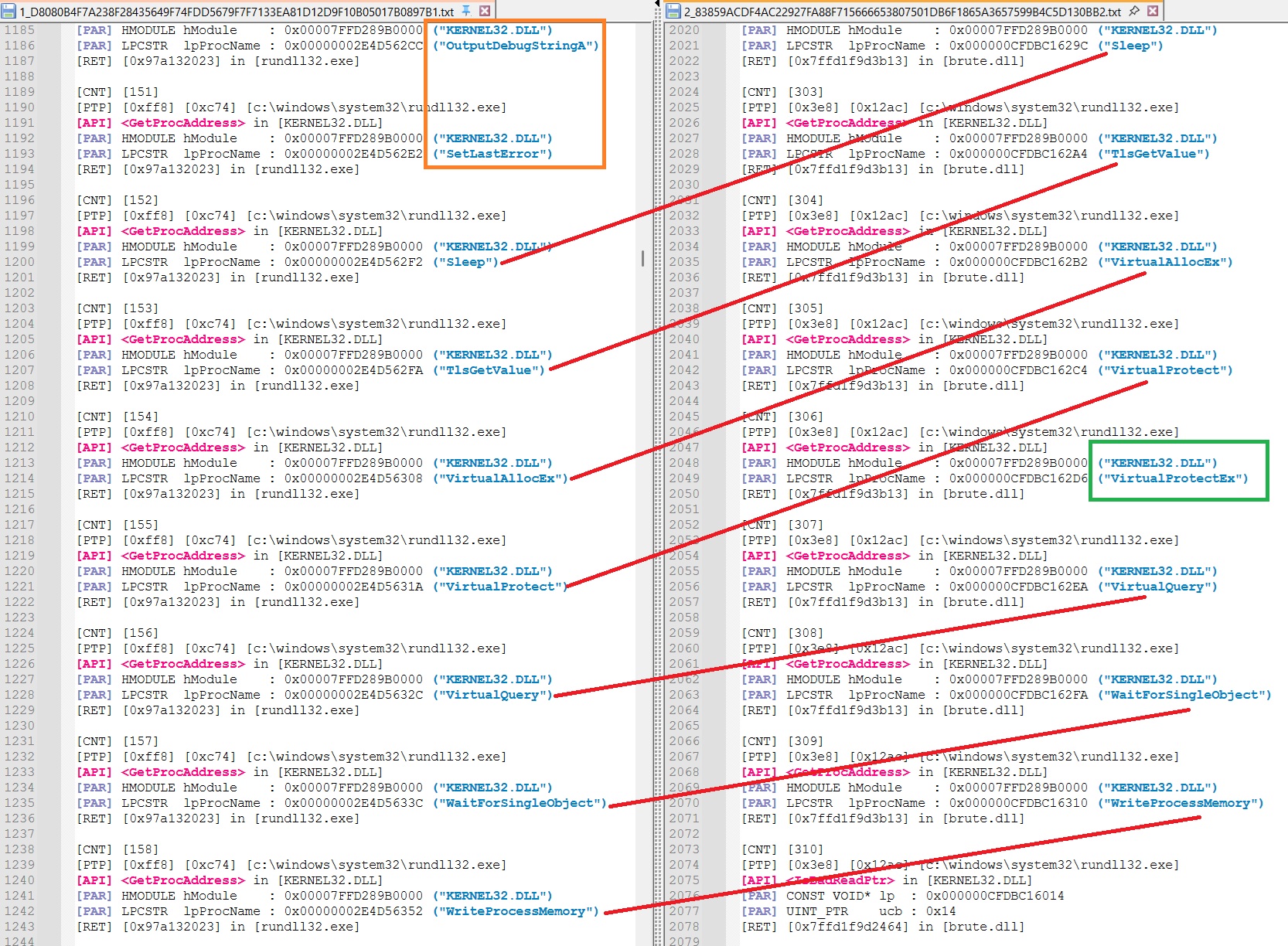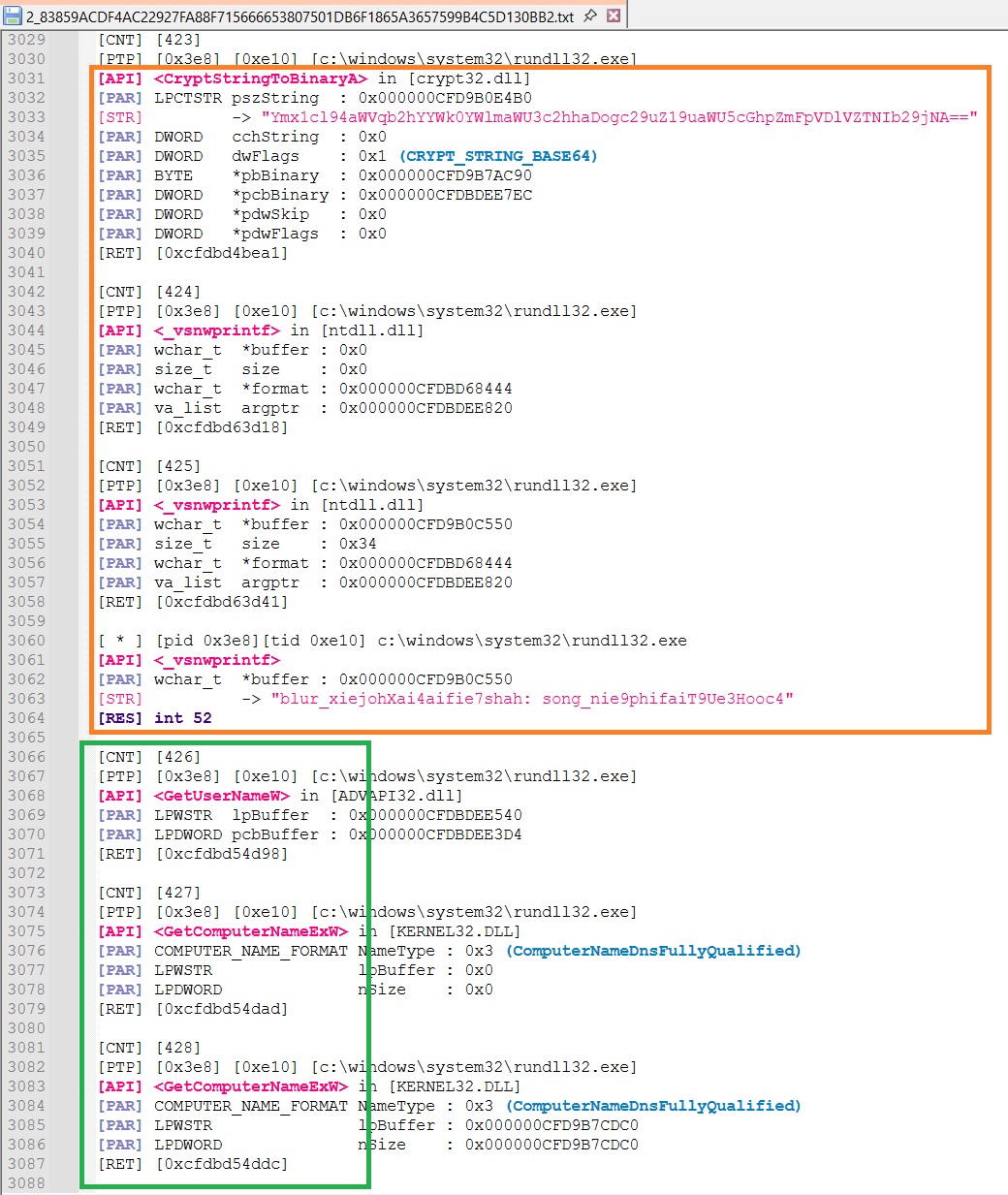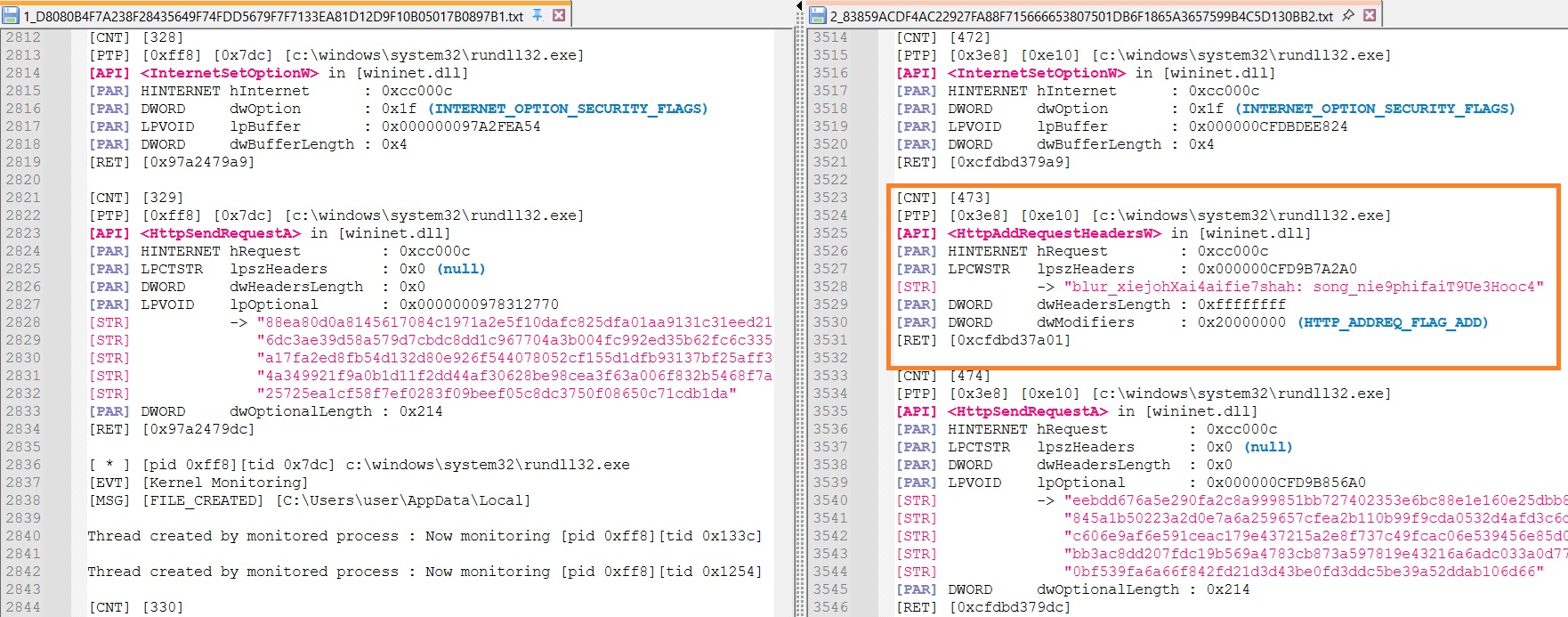BRUTERATEL
Context
Sample 1 SHA256 : D8080B4F7A238F28435649F74FDD5679F7F7133EA81D12D9F10B05017B0897B1
Sample 2 SHA256 : 83859ACDF4AC22927FA88F715666653807501DB6F1865A3657599B4C5D130BB2
Sample Source :
Sample 1
Sample 2
INTRO
In this article I will demonstrate how simple it can be to spot code evolution between 2 versions of the same malware using dynamic analysis and Reflexions Sandbox.
The 2 samples analysed here are from the BruteRatel Malware.
Sold for 3000$, their authors claim that “each release includes new evasion methods tested with more than 10 EDR software solutions”, and their code is indeed packed with various countermesures that I partially described in a previous post
The two samples I chose for this analysis vary a lot from the ‘outside’, first one is a 248KB DLL while the second one is a 3MB signed DLL.
I ran the two samples in a controlled environment while redirecting their network communications to my own (basic) implementation of a BruteRatel C2.
In this case the C2 simply reply to their beaconing with an ‘ExitProcess’ order.
A list of all BrutelRatel commands is available here (Ongoing process)
Samples were supervised by the Reflexions Sandbox, results are available here
Loader
Manually comparing the excution trace clearly indicates that the two samples used a different 1st stage loader.
Early execution stage shows for instance that the 1st sample is resolving dynamic imports while the 2nd one is busy pretending to rely on a graphical user interface :
The traces then start to converge around API call 150 for the 1st sample and API call 302 for the second sample with some differences however :
This indicates that the two samples used the same 2nd stage loader which was modified between the generation of sample 1 and 2.
BruteRatel Main Payload
The execution traces then merge completly at API call 213 for the first sample and 355 for the second sample :
This is when the final stage, the BruteRatel payload is reached.
Notice how the Region size of each NtProtectVirtualMemory call is strictly identical between the two samples.
C2
A logical shift happens between the two samples at API call 212 and 414 for the simple reason that the 1st sample is relying on 3 different C2 while the 2nd sample only uses 2 :
User-Agent
Result from _vsnwprintf call 275 (1st sample) and 415 (2nd sample) shows that the harcoded user-agent was changed :
Sample 1 :
[CNT] [275]
[PTP] [0xff8] [0x7dc] [c:\windows\system32\rundll32.exe]
[API] <_vsnwprintf> in [ntdll.dll]
[PAR] wchar_t *buffer : 0x000000097830CE10
[PAR] size_t size : 0x72
[PAR] wchar_t *format : 0x000000097A278444
[PAR] va_list argptr : 0x000000097A2FEA50
[RET] [0x97a273d41]
[ * ] [pid 0xff8][tid 0x7dc] c:\windows\system32\rundll32.exe
[API] <_vsnwprintf>
[PAR] wchar_t *buffer : 0x000000097830CE10
[STR] -> "Mozilla/5.0 (Windows NT 10.0; Win64; x64) AppleWebKit/537.36 (KHTML, like Gecko) Chrome/90.0.4430.93 Safari/537.36"
[RES] int 114
Sample 2 :
[CNT] [415]
[PTP] [0x3e8] [0xe10] [c:\windows\system32\rundll32.exe]
[API] <_vsnwprintf> in [ntdll.dll]
[PAR] wchar_t *buffer : 0x000000CFD9B7A2A0
[PAR] size_t size : 0x6b
[PAR] wchar_t *format : 0x000000CFDBD68444
[PAR] va_list argptr : 0x000000CFDBDEE820
[RET] [0xcfdbd63d41]
[ * ] [pid 0x3e8][tid 0xe10] c:\windows\system32\rundll32.exe
[API] <_vsnwprintf>
[PAR] wchar_t *buffer : 0x000000CFD9B7A2A0
[STR] -> "Mozilla/5.0 (X11; U; Linux i686; pt-BR) AppleWebKit/533.3 (KHTML, like Gecko) Navscape/Pre-0.2 Safari/533.3"
[RES] int 107
Authorization-Token
So did the Token :
Update in sample 2
At this point in its loading procedure, BruteRatel normaly starts a simple fingerprinting of the infected host sent to the C2 upon its first beaconing.
This fingerprint phase is visible in green for sample1, sample 2 however is doing something else :
We can see that some instructions were added (orange) before the start of the fingerprinting (green)
This change is related to the HTTP Header :
BruteRatel was updated to include this new header (unclear for which purpose at this point)
RC4 Key
Unsuprisingly the RC4 Key used to encrypt communication with C2 was also changed :
ExitProcess
The execution between the 2 samples then goes on until executing the ‘ExitProcess’ Order :
Conclusion :
This short article illustrates a few keypoint :
- It’s much easier to change the packaging (loader) than the payload
- Changes to the loader, or changing the loader altogether, doesn’t make much difference from a dynamic analysis point of view
- Behavior based signatures still prove to be a very efficient and reliable way not only to identify a specific malware but also to spot potential updates
Nonetheless, statical analysis remains the only option to get to specific changes, for instance if the ‘ExitProcess’ command ID was changed between the two samples generation it would have made my job much more tedious.
On a side note : String functions may be convenient, but they should be a hard pass for obvious reasons exposed in this article…









